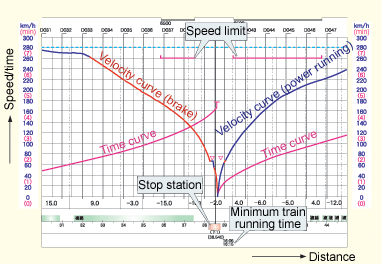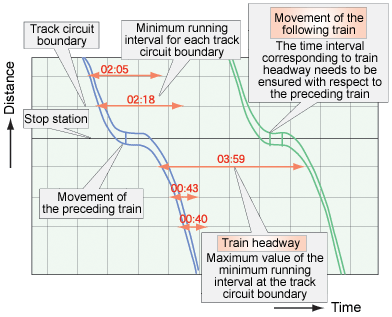| 8. Train Curve Calculation System Supporting Digital ATC | |||||
|
Numeric data fundamental to the creation of a train operation diagram includes the minimum train running time and the train headway. The former is the standard running time when a train runs between stations observing the speed limit, while the latter is the minimum time interval to be ensured when multiple trains run one after another. These calculations have long been carried out manually, but in recent years computers are increasingly used for the purpose. The digital ATC was recently introduced on Shinkansen and conventional lines. The algorithms for calculating the minimum train running time and train headway of the digital ATC are, in contrast to those of the conventional ATC, quite complex. This is because, in the creation of brake patterns and the calculation of train headway, the accessible distance to the preceding train is affected by the train speed and varies in a variety of ways. In this study, a new algorithm was devised to calculate a train performance curve taking these conditions into account, and a practical system to calculate a train performance curve supporting the digital ATC was developed. As a result, swift examination of a range of operation constraint conditions is now possible (screen examples: Fig.1 and 2). The system has already been put to practical use in creating train performance curves for the Shinkansen and train running data used for an operational navigation system.
|

